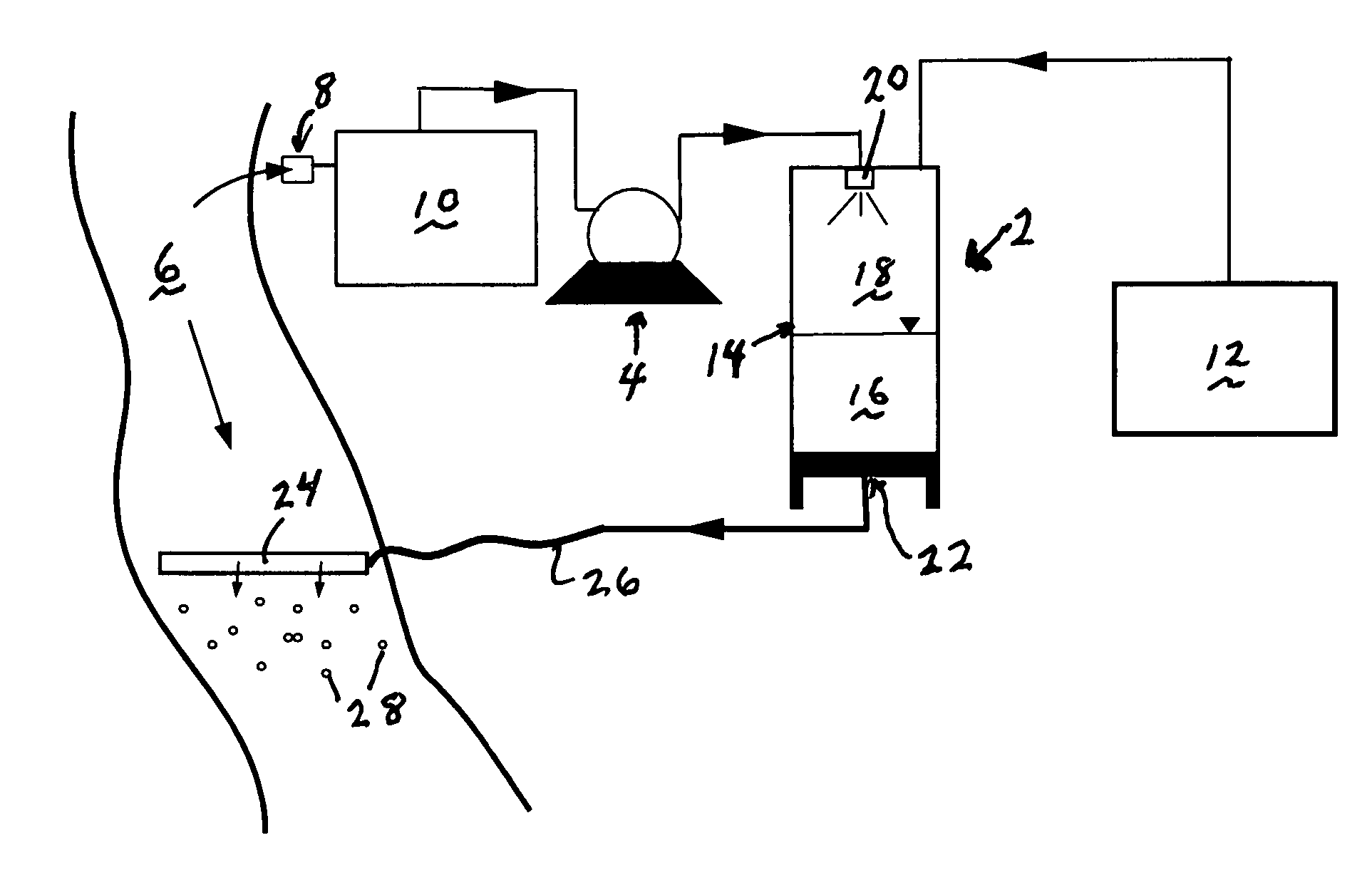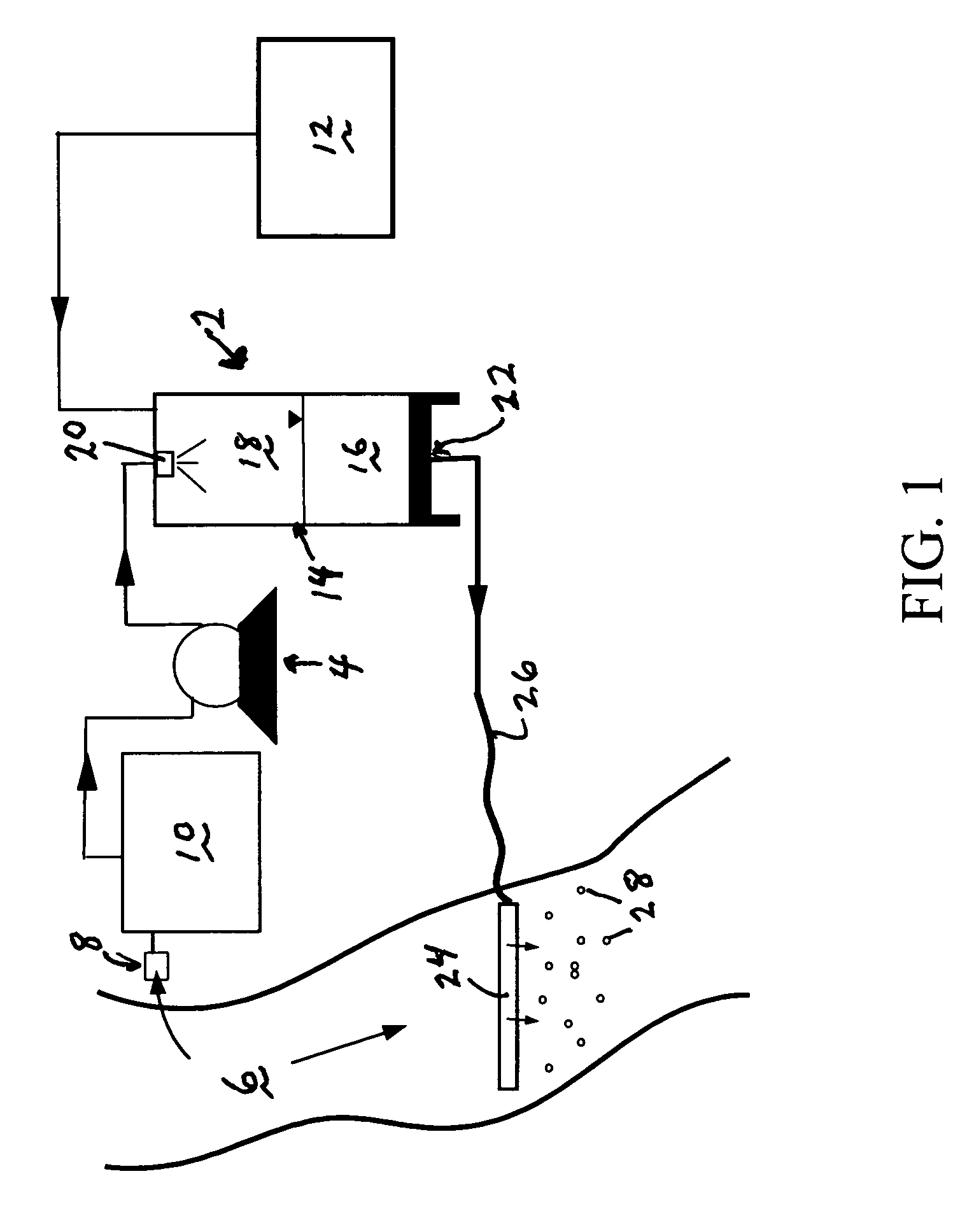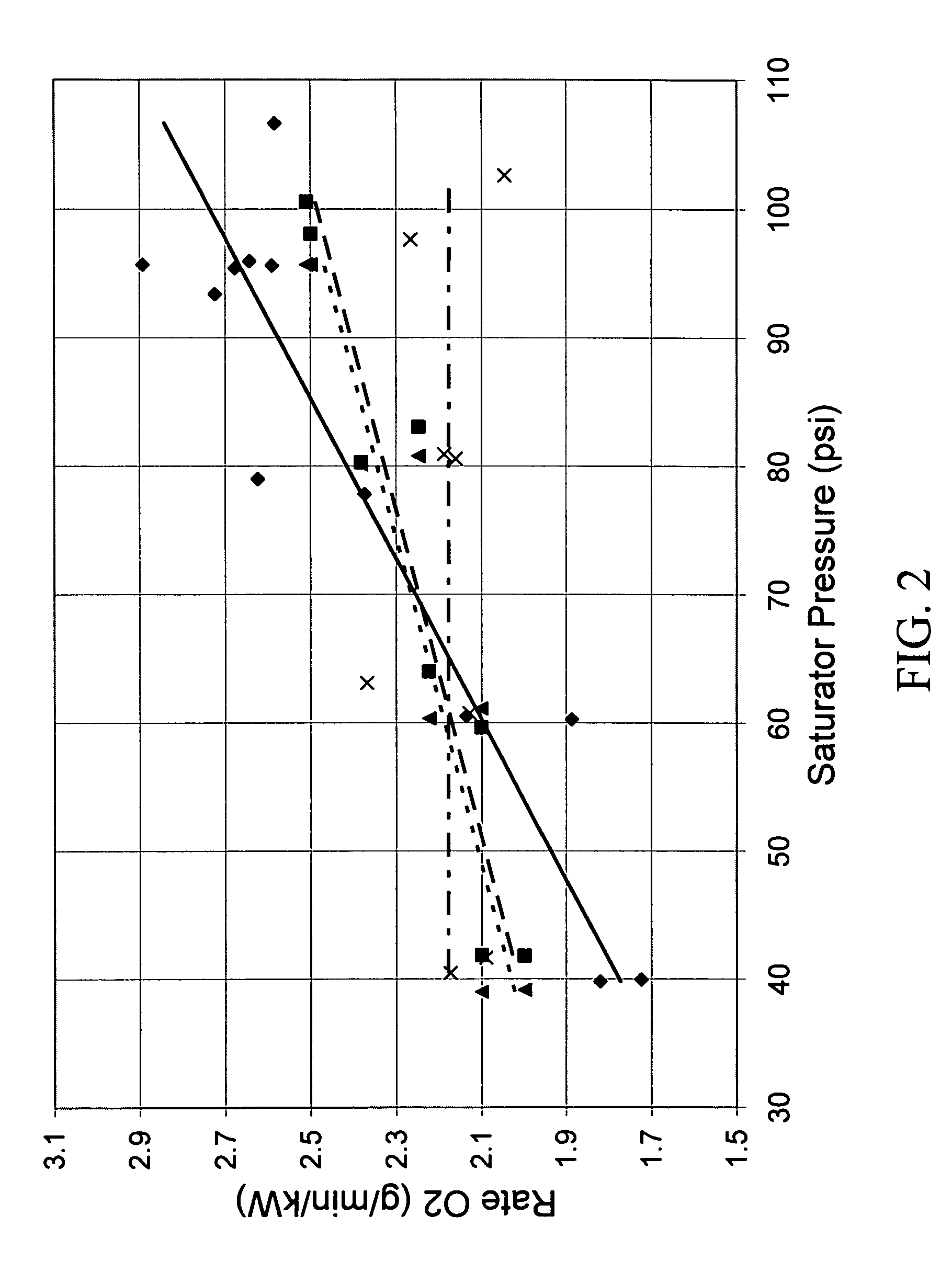System and method for dissolving gases in liquids
a liquid gas and liquid technology, applied in the nature of treatment water, machines/engines, energy-based wastewater treatment, etc., can solve the problems of high capital cost of permanent installation equipment, equipment type that is not suitable for field use, and devices that are not suitable for high-particulate water
- Summary
- Abstract
- Description
- Claims
- Application Information
AI Technical Summary
Benefits of technology
Problems solved by technology
Method used
Image
Examples
example 1
Oxygenation with Air or Oxygen
[0120]A proof-of-concept system was constructed and preliminary “proof-of-concept” testing performed using a 1000-gallon capacity plastic tank filled with water containing varying levels of organic pollutants to simulate field conditions. The results of some of the preliminary tests performed are summarized hereinbelow.
[0121]Tap water with added sodium sulfite (an oxygen binder) was treated to raise DO from 1 mg / liter to 6 mg / l. Oxygenation rates measured were: bubble aeration 9.1 g oxygen / hr, oxygenator with air 22.7 g oxygen / hr, oxygenator with oxygen 113.6 g oxygen / hr. Energy to oxygenate the tank water using oxygen and the oxygenator was ⅙ that of bubble aeration. Weak animal lagoon water was added to the treatment tanks. Test results indicated the oxygenator was able to create a floating layer of algae, and supersaturated DO conditions were maintained throughout the test. The bubble aeration tank created turbulence that continually fractured the al...
example 2
Comparison of Oxygenator with Other Devices
[0134]A device of the present invention was compared to currently used technology for providing oxygen to wastewater. The most commonly used technologies are fine-bubble aeration provided through diffusers by blowers or compressors using atmospheric air (fine-bubble air) or compressed oxygen (fine-bubble oxygen).
[0135]Mixed Liquor was obtained from the Fayetteville, Ark. wastewater treatment plant. The wastewater was stored in a 550 gallon plastic tank until used in these tests. The mixed liquor quickly become anaerobic and remained so until testing. Each test began by transferring approximately 100 gallons of the mixed liquor into an open-top 1000 gallon tank. Then 700 gallons of reduced DO tap water (sodium sulfite was used to remove oxygen) was added. The wastewater solution was then mixed using a sump pump turned on its side. Two calibrated YSI-85 DO probes were placed into the wastewater and initial samples were collected at two hour i...
example 3
Field Deployment
[0150]The field-scale oxygenator was deployed at two locations in Northwest Arkansas: Mud Creek and Columbia Hollow Creek. Measurable increases in DO were measured at both locations. The deployment at Columbia Hollow Creek also demonstrated substantial reductions in BOD5 and ammonia levels. The ability to float suspended solids for subsequent removal by skimming was also demonstrated at this location.
[0151]The initial deployment was conducted in Mud Creek in Fayetteville, Ark. at a point just before the confluence of Mud and Clear Creek. A majority of water in this stream under base-flow conditions is effluent from the Fayetteville Wastewater Treatment Plant. During rainfall events, most of the flow is urban runoff from the City of Fayetteville. This stream is clean with a low BOD and acceptable DO.
[0152]
TABLE 4Comparison of three aeration technologies in terms of time and costPresentSurfaceInventionAgitationDrop StructureRep 1Rep 2Rep 1Rep 2Rep 1Rep 2O2 delivery rat...
PUM
| Property | Measurement | Unit |
|---|---|---|
| diameter | aaaaa | aaaaa |
| dissolving | aaaaa | aaaaa |
| pressure | aaaaa | aaaaa |
Abstract
Description
Claims
Application Information
 Login to View More
Login to View More - R&D
- Intellectual Property
- Life Sciences
- Materials
- Tech Scout
- Unparalleled Data Quality
- Higher Quality Content
- 60% Fewer Hallucinations
Browse by: Latest US Patents, China's latest patents, Technical Efficacy Thesaurus, Application Domain, Technology Topic, Popular Technical Reports.
© 2025 PatSnap. All rights reserved.Legal|Privacy policy|Modern Slavery Act Transparency Statement|Sitemap|About US| Contact US: help@patsnap.com



